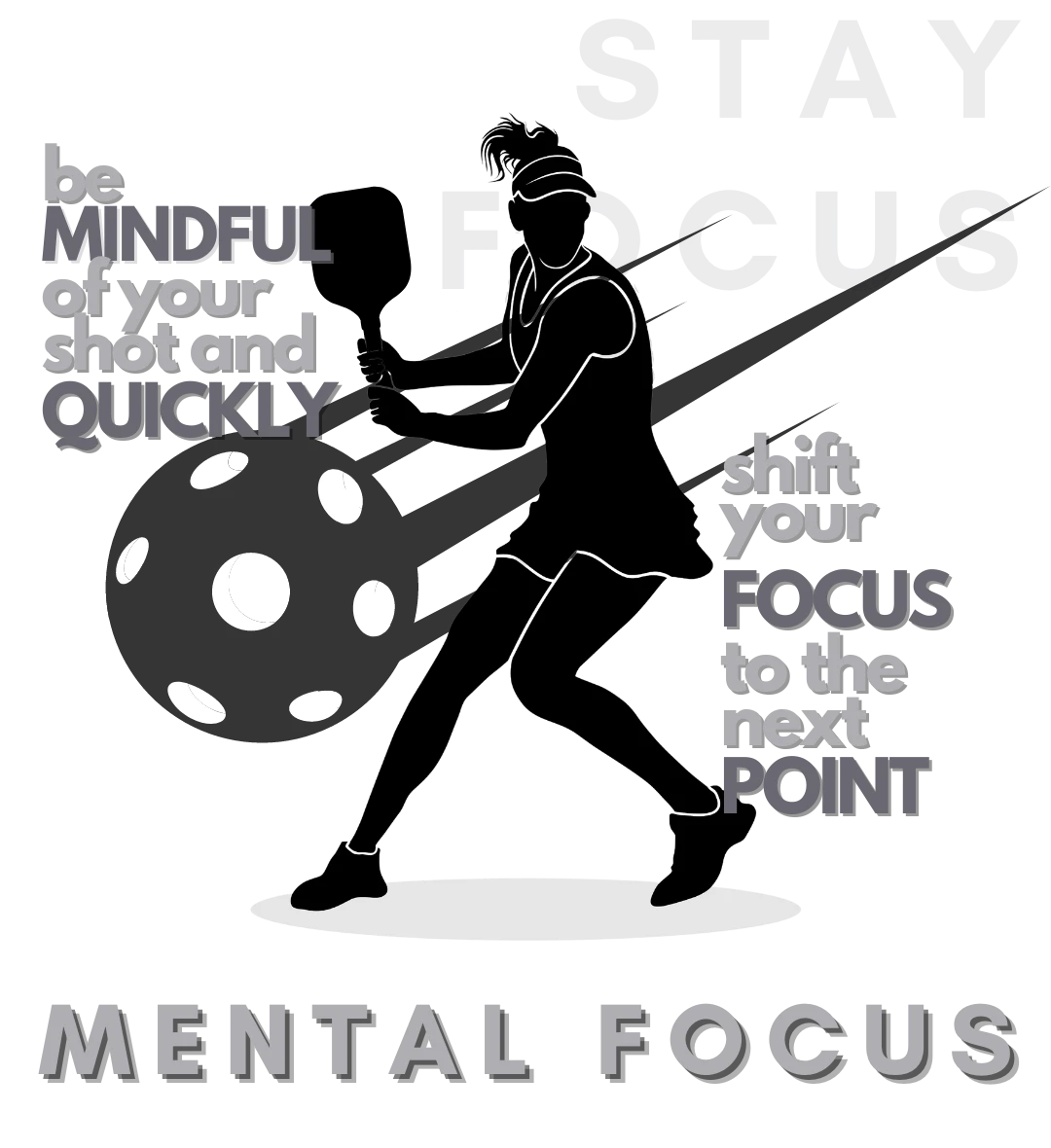
Pickleball Techniques and Strategies: from Beginner to Champion
From Beginner to Pro: Ace your Play with our Pickleball Techniques & Strategies to Dominate the Court in your Next Game.
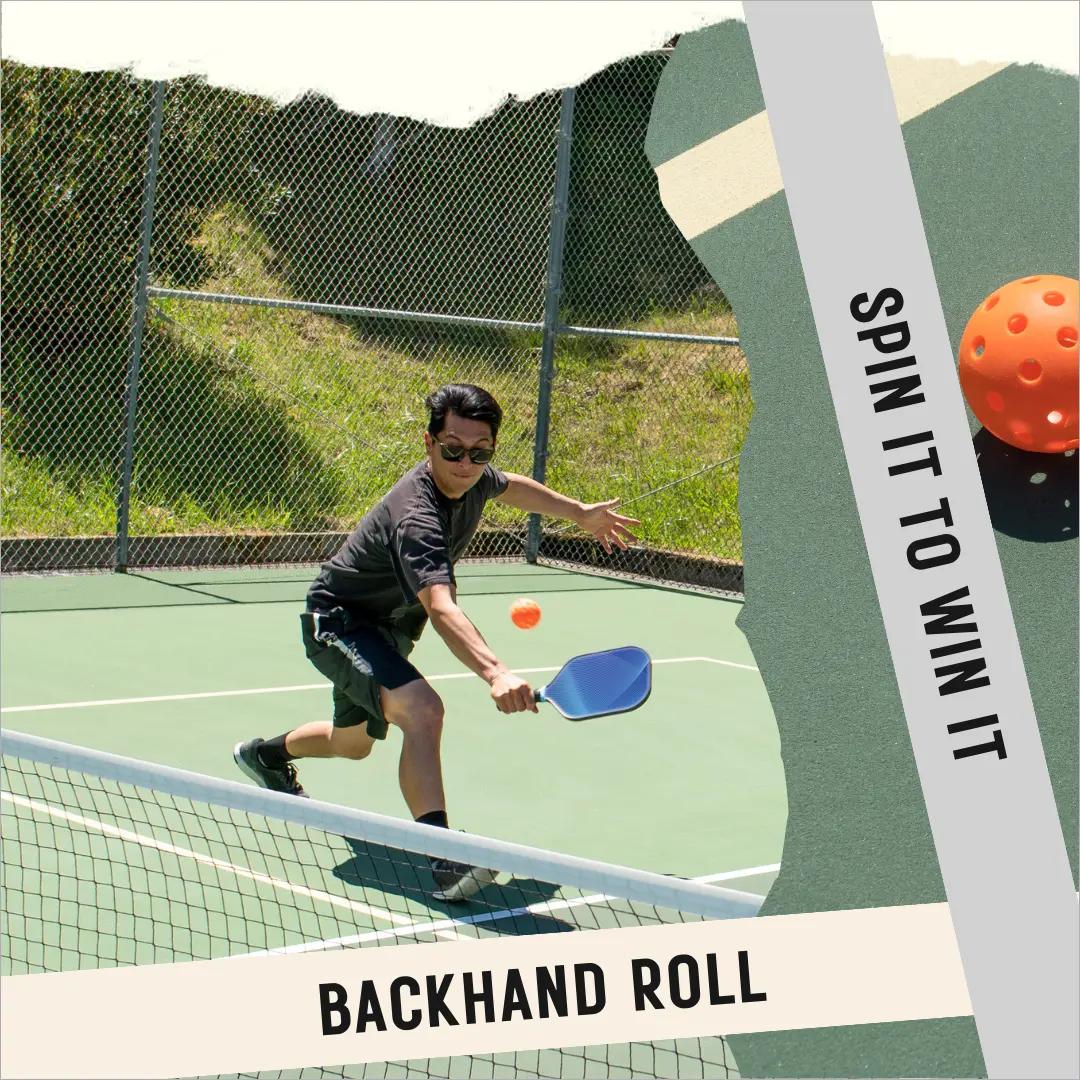 In the world of Pickleball, where each shot involves careful strategy and skill, balance is critical for a good performance. While the forehand shot often gets the most attention, the backhand roll is just as significant within the Pickleball community.
In the world of Pickleball, where each shot involves careful strategy and skill, balance is critical for a good performance. While the forehand shot often gets the most attention, the backhand roll is just as significant within the Pickleball community.
“Balance is not something you find, it’s something you create,” the great Jana Kingsford once said. This idea holds true, especially when you’re trying to master the graceful Backhand Roll shot.
In Pickleball, where both backhand and forehand shots are equally important, learning how to do the backhand roll well is essential to keep your balance on the Pickleball court. This is especially important when introducing Pickleball for Kids, as it helps young players develop fundamental skills from an early age.
How you hit the backhand roll shot is an essential part of Pickleball footwork. In addition, it plays a huge role in executing this shot accurately. To do this, you use the backhand side of your paddle to roll the ball in a controlled way. Consequently, doing this shot accurately depends a lot on having the right footwork.
In this blog, we will explore the backhand roll in Pickleball by looking closely at its details not only how it differs from the forehand but also why it is an essential skill for players of every skill level.
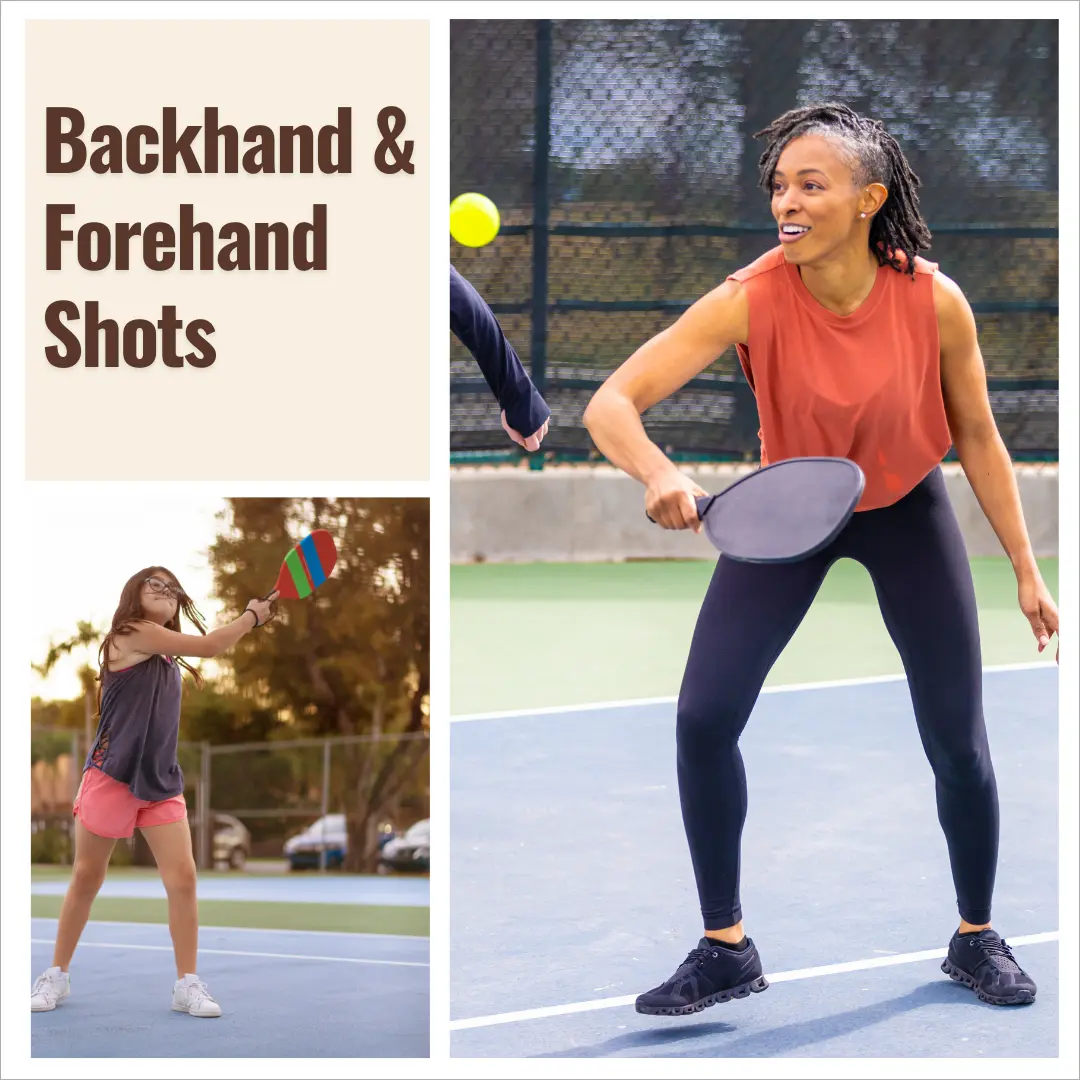 Before we explore the details of the backhand roll, let’s start by grasping the basic distinctions between backhand and forehand shots in Pickleball.
Before we explore the details of the backhand roll, let’s start by grasping the basic distinctions between backhand and forehand shots in Pickleball.
Forehand: The Powerhouse
Pickleball players often develop their first weapon with the forehand shot. However, in this technique, they hit the ball on their dominant hand’s side, using a natural swinging motion to create power and accuracy. Moreover, players often choose the forehand shot when they want to hit the ball quickly, whether for a soft dink or a hard drive. Additionally, many Pickleball enthusiasts rely on quick and aggressive plays at the net.
Backhand: The Skill
On the opposite side of the court, you’ll find the backhand shot. Unlike the forehand, which uses the dominant hand, the backhand involves using the non-dominant hand. This difference makes it naturally less forceful, but grants you a unique skill and control. Furthermore, the backhand roll demonstrates your skill perfectly, while relying on precise wrist movements, a delicate touch, and an in-depth understanding of angles.
1. Versatility – Being a versatile player strengthens your competitiveness. When you can use both forehand and backhand shots, you are better prepared to deal with different situations in a game, such as fast net volleys or baseline rallies.
2. Strategic Advantage – Likewise, being skilled in both shots keeps your opponents alert. Also, by switching between forehand and backhand shots, you can disrupt their rhythm and make them more likely to make mistakes.
3. Court Coverage – Since Pickleball courts are not very big, a strong backhand lets you accurately reach more balls. This can be especially handy in Pickleball doubles matches.
4. Injured Prevention – Relying solely on your dominant hand for forehand shots can lead to overuse injuries. However, developing a reliable backhand can reduce this strain and help prolong your playing career.
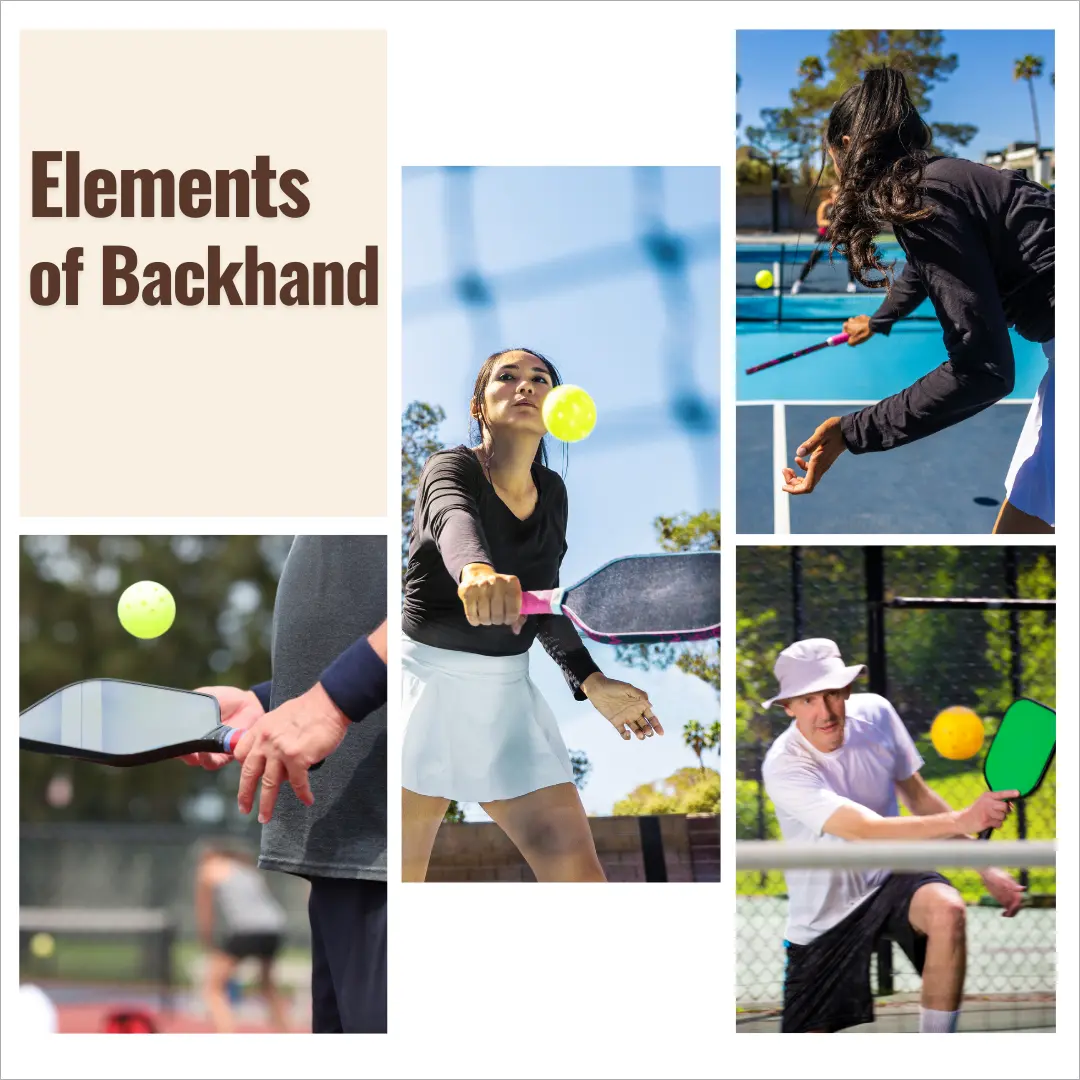 1. Grip – To improve your game, firstly, use a continental grip. Not only will it allow you to switch between forehand and backhand shots seamlessly but can also enhance your overall performance.
1. Grip – To improve your game, firstly, use a continental grip. Not only will it allow you to switch between forehand and backhand shots seamlessly but can also enhance your overall performance.
2. Wrist Action – The key to a successful backhand roll lies in your wrist action. Rather than swinging your whole arm, focus on moving your wrist. In addition, gently snap your wrist forward to create topspin and stay in control.
3. Soft Touch – The backhand roll is well-suited for gentle, precise shots over the net. Not only it can be used for dinks, and drops but also for delicate volleys that demand accuracy.
4. Practice – Similar to any other Pickleball shots, practice is equally important in mastering the backhand roll. Therefore, invest time in refining your technique and gaining a solid understanding of the angles to become proficient.
 1. Practice Makes Perfect – Just like with any other shot, for instance, it’s essential to practice. Dedicate time in your practice sessions not only to hit backhand rolls so you can get better at controlling but also to be consistent.
1. Practice Makes Perfect – Just like with any other shot, for instance, it’s essential to practice. Dedicate time in your practice sessions not only to hit backhand rolls so you can get better at controlling but also to be consistent.
2. Pay Attention to Footwork – Note that having good footwork is important for getting the correct position to hit the backhand roll. Therefore, work on your footwork to make sure you’re in the right place to make the shot.
3. Control Your Wrist – It’s important to realize that your wrist plays a significant role in controlling the backhand roll. Make sure to practice moving your wrist to enhance your control over the angle and spin of your shots.
4. Keep Your Eye on the Ball – Always keep your eyes on the ball throughout the entire shot. For this reason, you can make better contact and smoothly adjust to where the ball is going.
5. Change Up the Speed and Spin – Practice hitting backhand rolls with different speeds and spins. Furthermore, knowing how to change fast and how much the ball spins will make you a more adaptable player.
6. Get Feedback – Play alongside experienced players. Not only they can offer valuable advice to aid your improvement in the backhand roll, but they also provide coaching about your performance.
7. Stay Relaxed – If you hold the paddle or your body too tightly, it can negatively impact your shot. Therefore, aim to stay relaxed and execute a smooth motion when hitting the backhand roll.
1. Dinking – The backhand roll is a useful shot in Pickleball. You can make a gentle but also precise shot which helps you put the ball precisely over the net and into your opponent’s Non-Volley Zone.
2. Third-Shot Drop – When you’re about to return a serve or set up for a Third-Shot drop, the backhand roll can give you an advantage. Furthermore, the topspin on the ball assists it in going over the net and then softly landing in your opponent’s non-volley zone, known as the “kitchen.”
3. Groundstrokes – If you’re in a baseline rally or pushed away from the net, you can utilize the backhand roll for groundstrokes. This technique not only creates topspin but also keeps the ball in the game.
4. Passing Shots – To send the ball past your opponent at the net, using a well-practiced backhand roll can aid in keeping it close to the ground and moving swiftly. As a result, this makes it challenging for your opponent to react.
5. Lobbying – In certain situations, such as when the game demands it, you can effectively catch your opponents off guard and change the game’s pace by using a backhand roll lob.
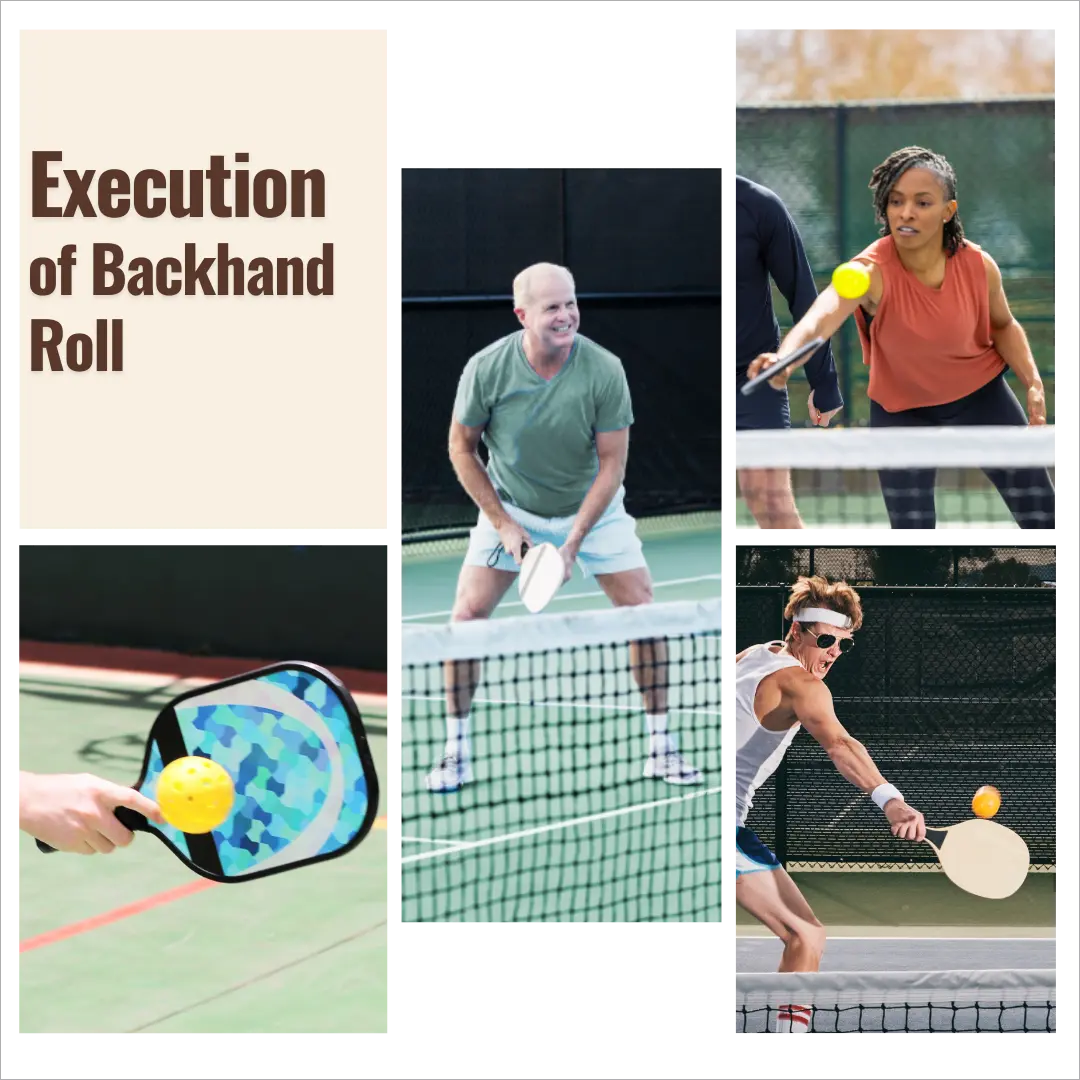 1. Grip – To begin with, make sure you have a proper grip on your Pickleball paddle. The continental grip requires your hands to be positioned so that your knuckles are placed on top of the handle. From there, slightly angle the paddle face upward to complete the proper grip technique.
1. Grip – To begin with, make sure you have a proper grip on your Pickleball paddle. The continental grip requires your hands to be positioned so that your knuckles are placed on top of the handle. From there, slightly angle the paddle face upward to complete the proper grip technique.
2. Positioning – Stand with your feet about shoulder-width apart then, bend your knees slightly. Afterward, position yourself so that your non-dominant shoulder faces the net. If you’re right-handed, this means your left shoulder should face the net, whereas, if you’re left-handed, it’s your right shoulder.
3. Paddle Position – Keep your paddle near your body, and bend your elbow at about a 90-degree angle. Additionally, make sure that the paddle face is open and tilted slightly upward.
4. Contact Point – When the ball comes close, slightly turn your body and get ready to hit it around the waist or hip level. Simultaneously, make sure to watch the ball closely.
5. Swing – As you prepare to execute the shot, start by swinging your paddle smoothly and upward through the ball. Further, the key to a backhand roll shot is to gently brush the ball from a low to a high position, creating topspin. This topspin is crucial because it helps the ball go over the net and then drop down into the opponent’s court.
6. Follow-Through – Once you’ve hit the ball, keep moving your paddle forward by extending your arm toward the net. This follow-through is equally important to take control of where the shot goes and how it spins.
 In the world of Pickleball, starting the journey to master the backhand roll significantly brings rewards. Not only does it add skills, balance, and precision to your game but also enhances the power of the forehand. Balance isn’t something you stumble on– you have to create it. In Pickleball, where balance is the secret to success, the backhand roll becomes your means of making that delicate balance on the court. Subsequently, dedicate time to improve your backhand roll and without a doubt, see how it boosts your Pickleball skills, turning you into a strong competitor on any court.
In the world of Pickleball, starting the journey to master the backhand roll significantly brings rewards. Not only does it add skills, balance, and precision to your game but also enhances the power of the forehand. Balance isn’t something you stumble on– you have to create it. In Pickleball, where balance is the secret to success, the backhand roll becomes your means of making that delicate balance on the court. Subsequently, dedicate time to improve your backhand roll and without a doubt, see how it boosts your Pickleball skills, turning you into a strong competitor on any court.
You may also visit USAPA’s Official Rulebook if you need further info about the Pickleball game.

From Beginner to Pro: Ace your Play with our Pickleball Techniques & Strategies to Dominate the Court in your Next Game.

Step into the spotlight, make a lasting impression, and become a trendsetter on the Pickleball court with our Pickleball apparel guide.

Thinking about the perfect gift for someone just starting in Pickleball? Discover our Pickleball gift guide tailored for beginners. Look no further.

Ever wondered how your Pickleball style could reach new heights? Learn the secrets of success with the “Pickleball Accessories To Enhance Your Play and Ace Your Style”.
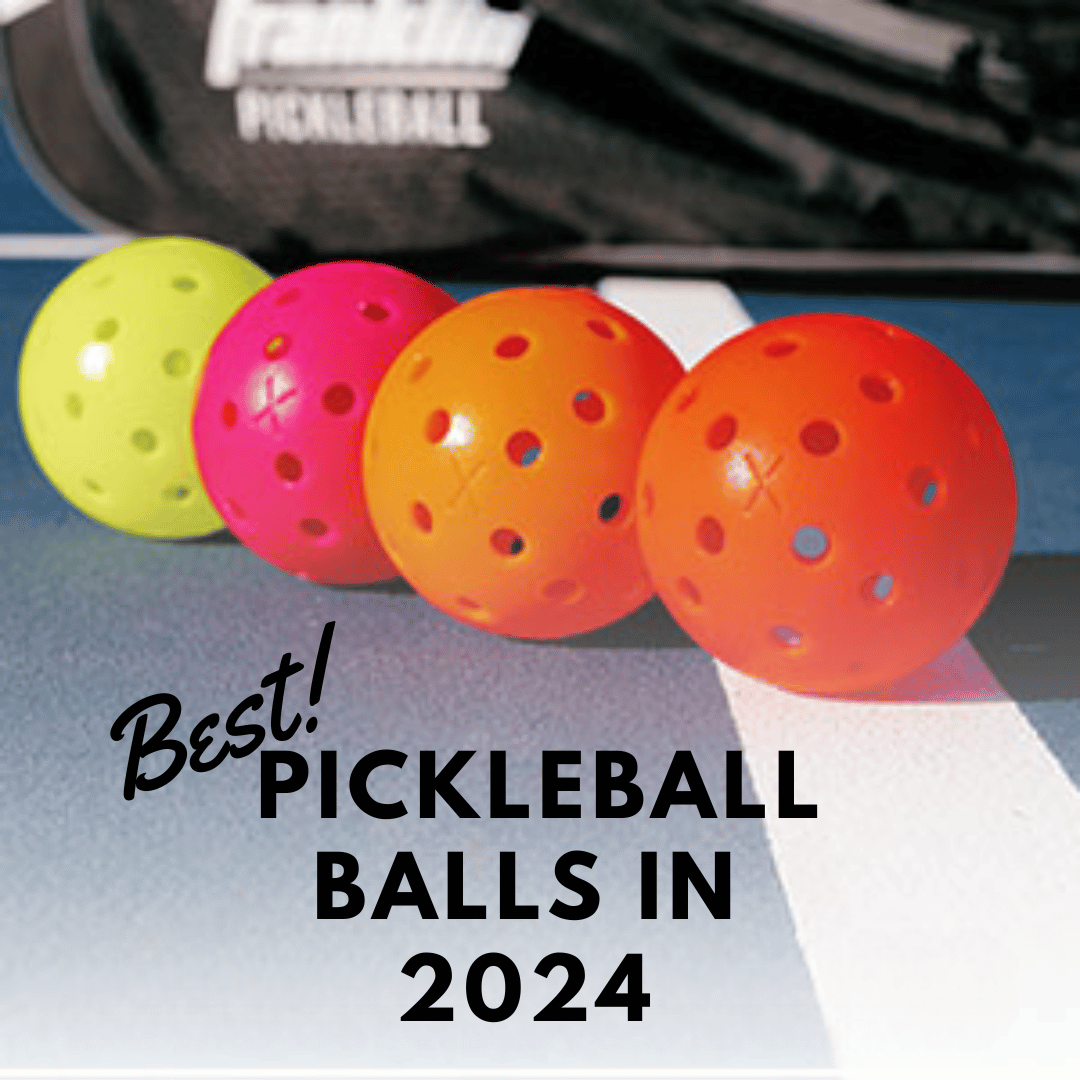
Are you seeking the perfect Pickleball balls for 2024? Let’s find out why they’re the “Best Pickleball balls for 2024”.
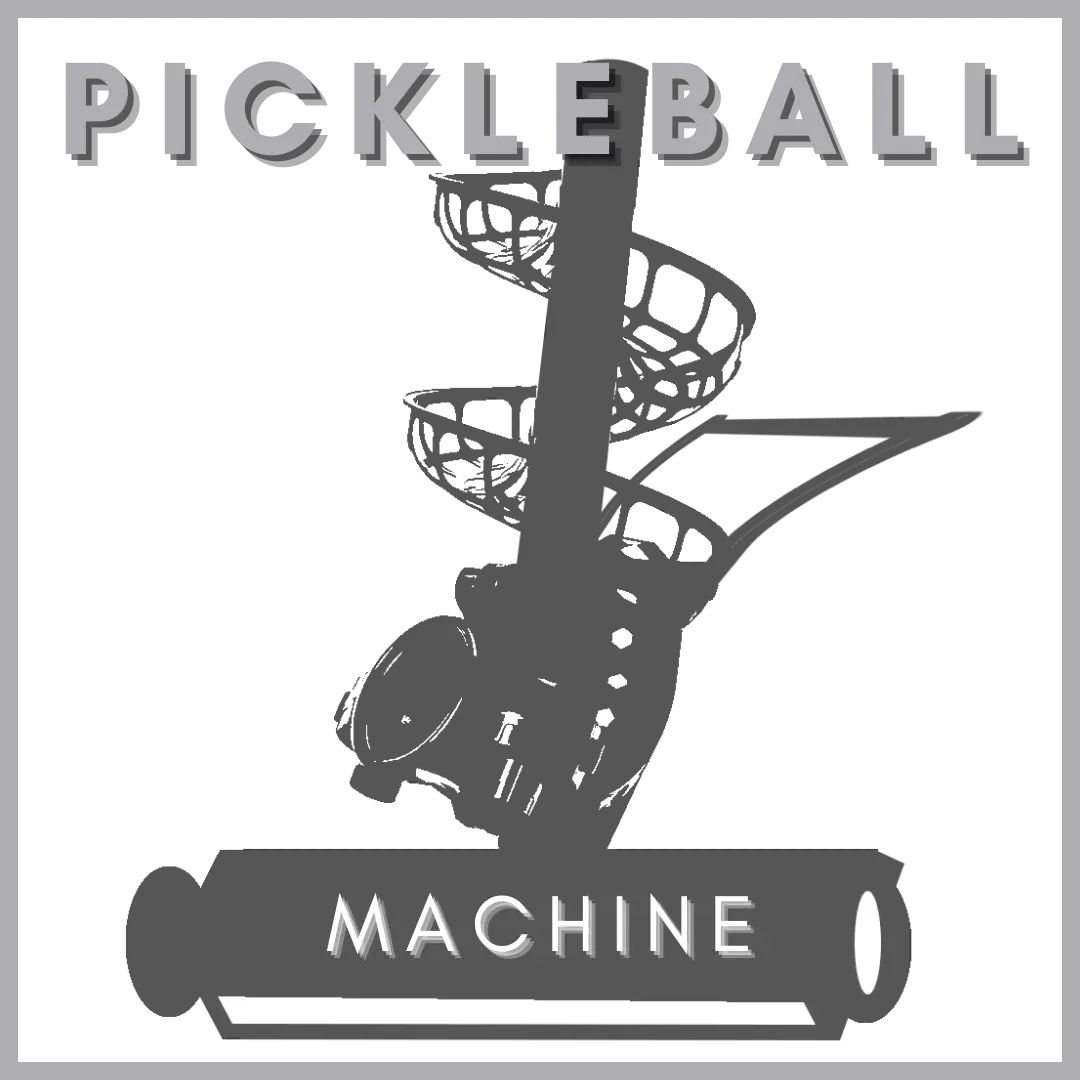
Looking to boost your pickleball skills? How can Pickleball Machines serve as your secret weapon?
Would you like us to feature your brand in our upcoming Pickleball blog post? Collaborate with us.